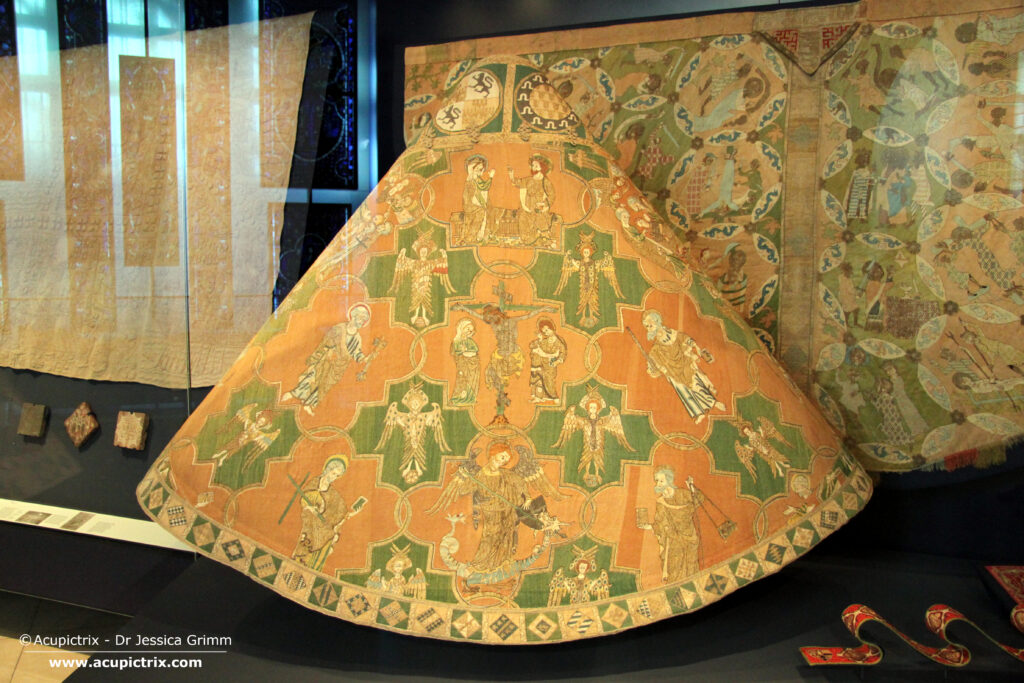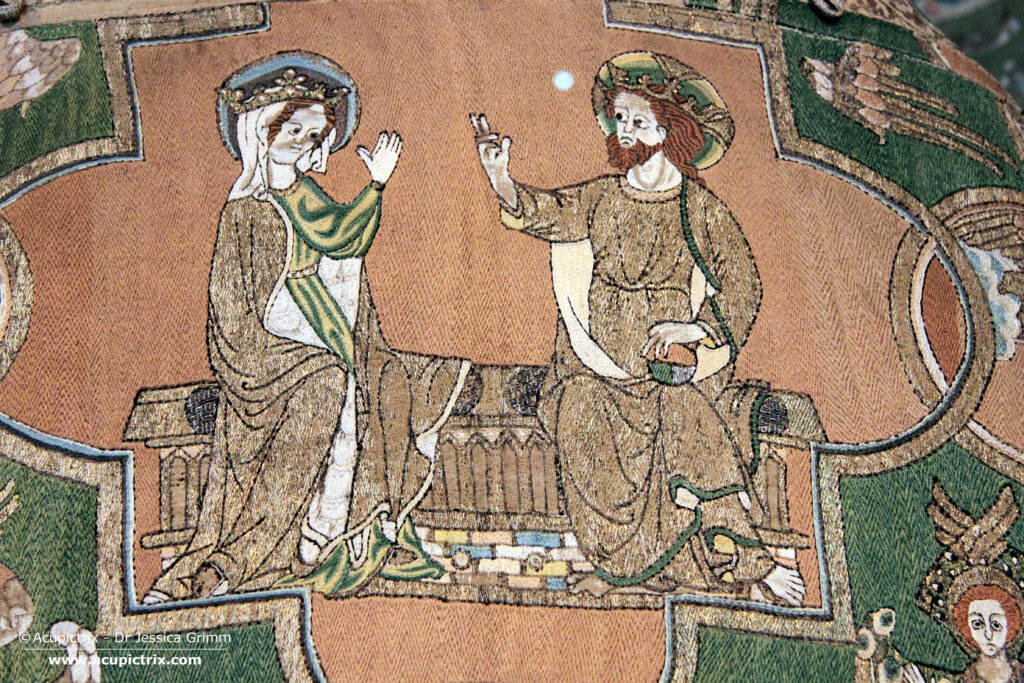While researching the grave finds of some of these bishops and kings, I also came across other small embroidered pieces that piqued my curiosity. When we think of Opus anglicanum, we think of underside couched gold threads. However, the embroiderers also underside couched silk. The most famous example is the Syon cope. The background consists entirely of underside couched green and red silk. I always thought that the Syon cope was somewhat of an oddity. And it is in terms of Opus anglicanum copes. However, other pieces of embroidery show underside couched silk, too. Let’s have a look.

Here you see the Syon cope (made AD 1310-1320, England) in its natural museum habitat. It is displayed in front of the equally stunning Hildesheim cope made in Germany in AD 1310-1320. I never entirely understand why the Victoria & Albert Museum points out to visitors: “Compared with known examples of contemporary Opus Anglicanum, this German work is rather naive and not as finely executed.” Really? I beg to differ. But that’s the topic of another blog post. Back to the underside couched silk!

Here, you see one of the central scenes on the back of the Syon cope: the Coronation of the Virgin. The red and green backgrounds of the scenes are filled with underside couched silk in a chevron pattern. And see the stripiness of the colour of the silk? That proves that different dye lots were used to stitch the cope. Maybe it was not apparent at the time of stitching. However, the different dye lots certainly reacted differently to light exposure over time.

As said, the underside couched silk on the Syon cope is a bit of an oddity. As far as I am aware, only a few smaller pieces of embroidery show underside couching in silk. So far, I have come across two amice apparels, an alb apparel, a stole, two seal-bags and an embroidered fragment. The oldest pieces date to the second half of the 12th century (vestments said to have belonged to Thomas Becket), and the youngest piece is the Syon cope itself, dating to the first quarter of the 14th century. The technique has thus been in use for about 150 years.
But why would you underside couch silk? Look closely at the picture of the seal-bag. What does underside couched silk on the grain of the embroidery fabric remind you of? Indeed: brick stitch. Why did the embroiderers opt for underside couching instead of brick stitch? To save on silk thread? When another couching pattern, such as the chevron pattern on the Syon cope, is used, I can understand why you use underside couching. However, you could also use brick stitch for a chevron pattern (think Bargello). And when you go off the grid to fill design elements, underside couching is a good option too. But remember the ‘inferior’ Hildesheim cope? That one is stitched entirely in brick stitch variations. So why would embroiderers on the Continent opt for brick stitch and those on the British Isles for underside couching? What’s the difference? Let’s explore that next week with a tutorial!
Literature
Browne, C., Davies, G., Michael, M.A. (Eds.), 2016. English Medieval Embroidery: Opus Anglicanum. Yale University Press, New Haven.
